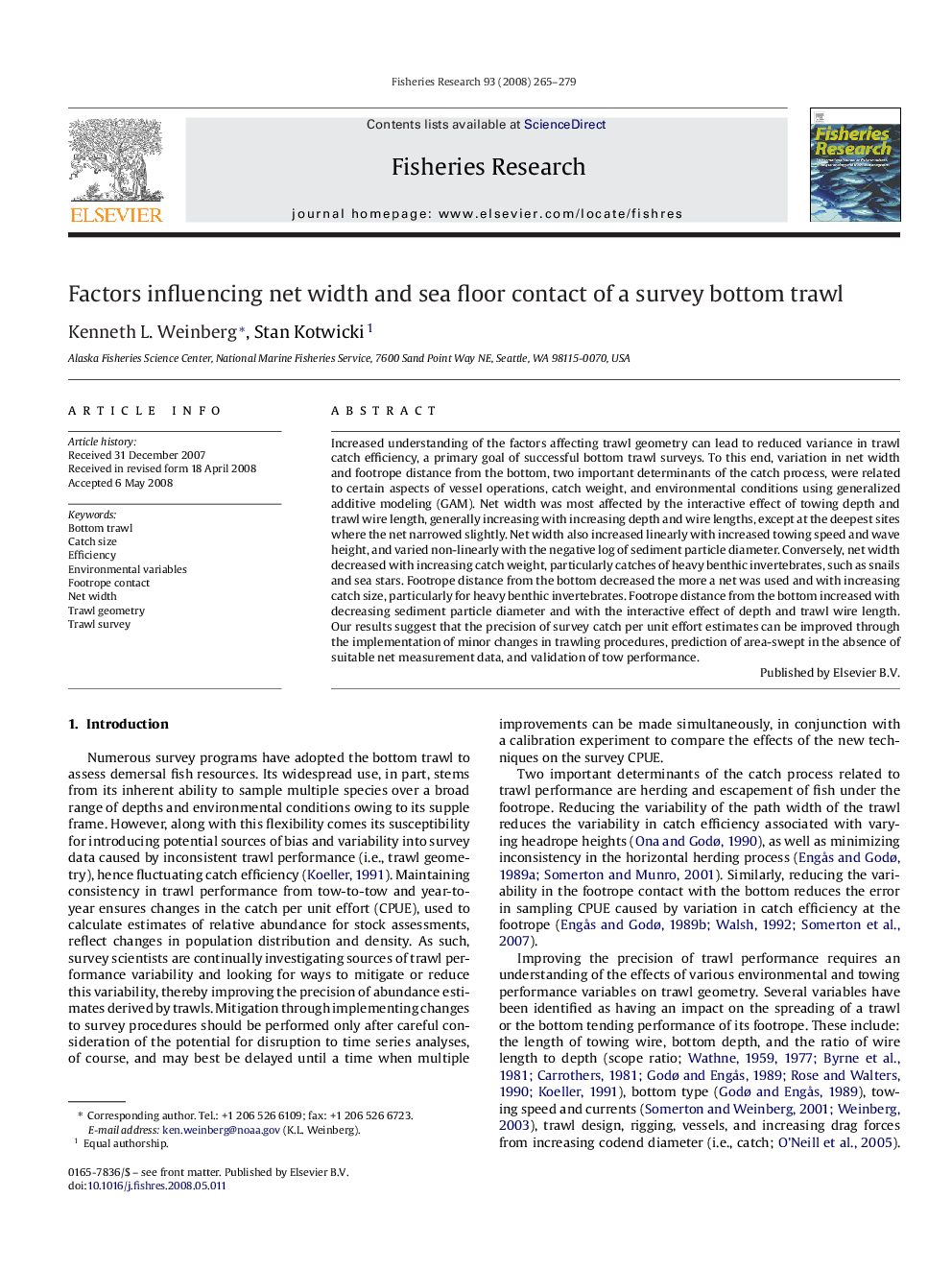| Article ID | Journal | Published Year | Pages | File Type |
|---|---|---|---|---|
| 4544179 | Fisheries Research | 2008 | 15 Pages |
Increased understanding of the factors affecting trawl geometry can lead to reduced variance in trawl catch efficiency, a primary goal of successful bottom trawl surveys. To this end, variation in net width and footrope distance from the bottom, two important determinants of the catch process, were related to certain aspects of vessel operations, catch weight, and environmental conditions using generalized additive modeling (GAM). Net width was most affected by the interactive effect of towing depth and trawl wire length, generally increasing with increasing depth and wire lengths, except at the deepest sites where the net narrowed slightly. Net width also increased linearly with increased towing speed and wave height, and varied non-linearly with the negative log of sediment particle diameter. Conversely, net width decreased with increasing catch weight, particularly catches of heavy benthic invertebrates, such as snails and sea stars. Footrope distance from the bottom decreased the more a net was used and with increasing catch size, particularly for heavy benthic invertebrates. Footrope distance from the bottom increased with decreasing sediment particle diameter and with the interactive effect of depth and trawl wire length. Our results suggest that the precision of survey catch per unit effort estimates can be improved through the implementation of minor changes in trawling procedures, prediction of area-swept in the absence of suitable net measurement data, and validation of tow performance.
